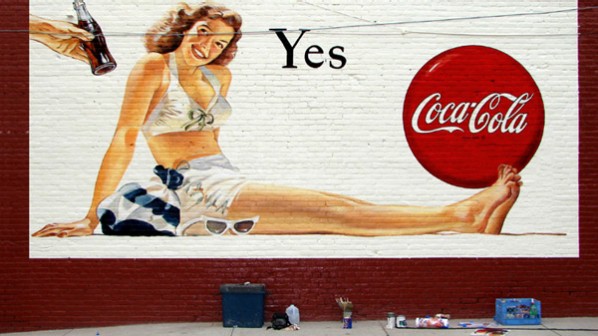22 Dec 2017
Restoration & Regeneration
The restoration of ghostsigns is a topic that causes much debate among enthusiasts and members of the public alike. I have covered many projects on this blog, and explored the themes in articles here and elsewhere. There are also pieces in the book looking at the issue in the context of particular projects.
My personal preference is for the keeping the fading originals, as they are what got me interested in the first place. However, I can also understand the desire to repaint them, and to see them as new. I don’t actively oppose this type of work, accepting that it will be done regardless, but my only proviso is that it is done well to avoid misrepresentation of the original. I would also caution against doing so en masse in a given location, as was/is planned in Cambridge, and potentially Walthamstow.
One argument in favour of repainting signs that I have not historically explored is that presented by an interesting 2012 article on the Coca-Cola Company blog. It makes the case that restorations such as the one pictured above can support the regeneration of ‘Main Street’ and areas that have become run down over time. Discussing the trend for including ghost sign restorations in “Main Street revitilization programs”, one of the sign painters responsible, Shannon Lake, says:
“These old murals are often the first thing on everybody’s list as a way to bring back that sense of nostalgia.”
There is perhaps something of the ‘Broken Windows’ theory at play here, in that repainting the signs signifies that people care about the area and its appearance. This, versus the neglect which might be implied by fading ghost signs, elicits a different attitude among visitors, and potential investors such as future residents or business owners. However, the implied causality at the start of the article must be questioned: simply repainting a few signs is unlikely to be sufficient to regenerate a particular locale. This does not mean that restorations don’t, and can’t, play a role in changing perceptions of a place, but that other parallel activities are also necessary to achieve the desired changes.
The most obvious counter argument to this is the regeneration of areas where the ghost signs haven’t been touched at all e.g. Stoke Newington in London where I lead my walking tours. Examples such as this show that an area can develop over time, while keeping the historical artefacts in their current faded form. There are no doubt differences between locations such as this in a major international city versus the much smaller American towns cited in the Coca-Cola Company blog. I suppose the only way to test the theory would be to undertake identical programmes of redevelopment in two similar towns, one that repainted a number of ghost signs, and one that left them alone.
I think that the article makes some valid arguments, but I’m not convinced of the suggested impact that restoring ghost signs can have. There is also the question of why efforts are made to restore old signs, when the same time and money could be invested in creating new work. Community murals, or subsidised advertising for local businesses, would be another way of getting fresh paint onto the walls, while both conveying a positive image for the area and helping to keep the craft skills alive. I suppose that is where I always end up on this debate, in that I’d rather see the effort put into creating tomorrow’s ghost signs, than attempting to recreate the past through restorations.



